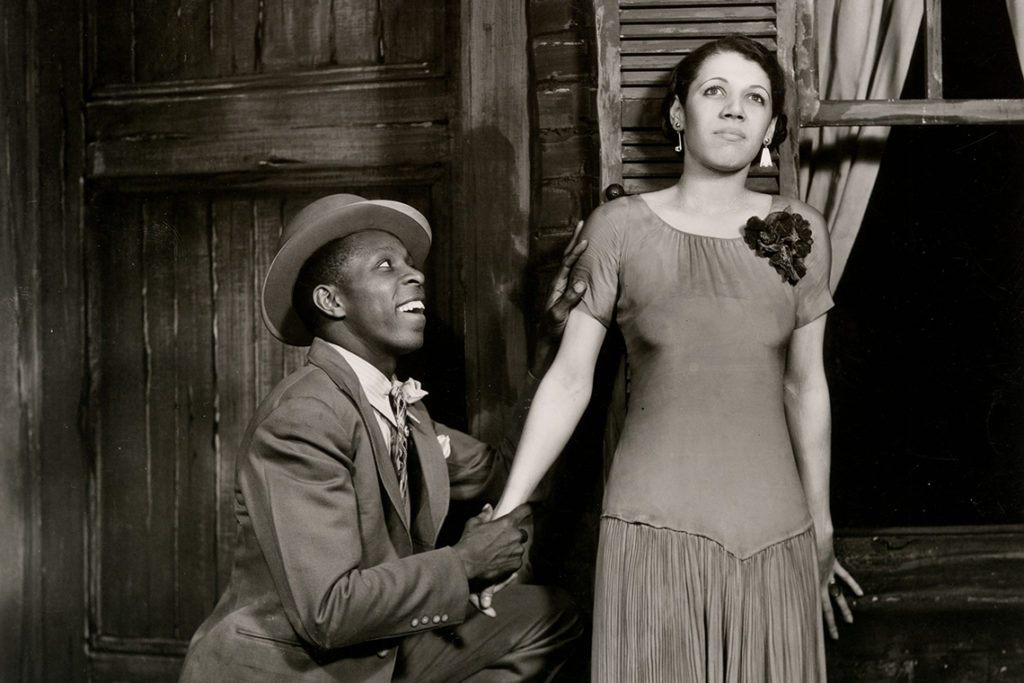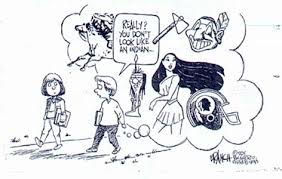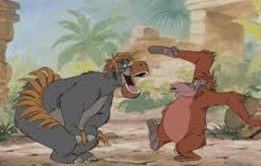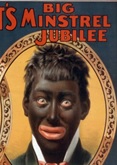It was said in a keynotes speech by Rhiannon Giddens, a solo artist and 2016 Steve Martin Prize for Excellence in Bluegrass and Banjo recipient, that bluegrass started as a combination of different styles and peoples coming together to make a unique sound. However, she laments that in the modern day, the words ‘bluegrass’ and ‘hillbilly’ lead to a particular image in everyone’s mind. Even looking back at a photograph of Bill Monroe, known as the father of Bluegrass, you can see where the ideas come from.
An image of Bill Monroe at Take it Easy Ranch in Callaway, Maryland. The above image is taken the Smithsonian, however the much smaller original can be found at the Library of Congress.
Remaining both casual and semi-professional, the dress code hasn’t changed that much. Neither has the association with ranches, the country, and folk music. However, it’s origin story certainly has been altered.
One modern image, described by Rhiannon, sums this perfectly: “that while black folk were singing spirituals and playing the blues, white folk were do-si-do-ing and fiddling up a storm – and never the twain did meet…” However, Rhiannon goes on to explain how this is certainly not the case. How, primarily due to the record companies attempting to market towards specific groups, specific sounds were sought for their records. Blacks go the blues, as that seemed to be popular, while the ‘hillbilly’ label was created for whites, with all relevant music being shuffled under it, regardless of true origin.
I’m not hear to recount Rhianna’s entire address, you can go read it yourself; it’s quite interesting. I merely wanted to bring attention to a display at the Kentucky Bluegrass Museum, located in Owensboro, with a quote from Bill Monroe himself on it.

A display in the Kentucky Bluegrass Museum, to honor the words and memory of Bill Monroe.
This isn’t a hidden display. In fact, it’s located one of the largest Bluegrass Museums in the country, which holds regular Bluegrass programs and hosts many exhibits regarding the genre. The quote itself is pretty on the nose, talking about how many things came together to make Bluegrass, not just ‘white’ music. So perhaps, if you could take a couple seconds, look into history and see what the man himself had to say about the thing he’s said to have created, it would save a bit of time on everything.
References
Giddens, Rhiannon. 2017. “Keynote Address”. Transcript of speech delivered at the IBMA Business Conference, Raleigh, NC, September 26, 2017. https://ibma.org/rhiannon-giddens-keynote-address-2017/.
Horenstein, Henry. Bill Monroe, Take It Easy Ranch, Callaway, Maryland. Photograph: inkjet print on foam core. Library of Congress Call Number LOT 15174, no. 70 (FM – MCD size) [P&P]. 1973. https://www.loc.gov/pictures/item/2021643190/.
Highsmith, Carol M. Display honoring the music, and thoughts, of Bill Monroe… Photograph: digital. Library of Congress Call Number LC-DIG-highsm- 63909 (ONLINE) [P&P]. July 14, 2020. https://www.loc.gov/pictures/item/2020722249/.




